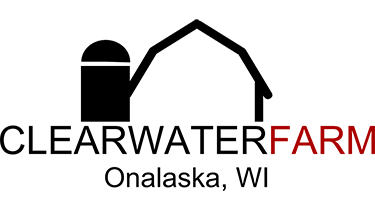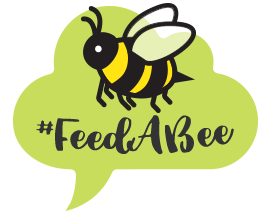 Save the Pollinators!
Save the Pollinators!
Pollinators provide a vital link to our food production by transferring pollen between plants to speed up the plant’s reproduction. This process is responsible for 1/3 of the bites of food eaten each day! Pollinators are in decline because of habitat loss and pesticide use. Without the pollinators our entire landscape would collapse.
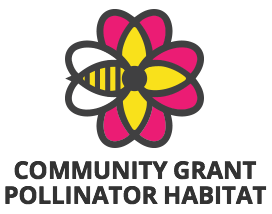 Funding for the Pollination Garden
Funding for the Pollination Garden
Clearwater Farm joins Bayer Feed a Bee Program to plant forage for pollinators. Our farm was part of a $500,000 grant initiative to plant forage in all 50 states. We received $2,500 from Feed a Bee Program to install an 800 square foot Wisconsin native plant pollination garden. As one of the recipients of this grant, we are honored through the initiative to provide a tangible, sustainable solution to the current lack of forage for bees and other pollinators.
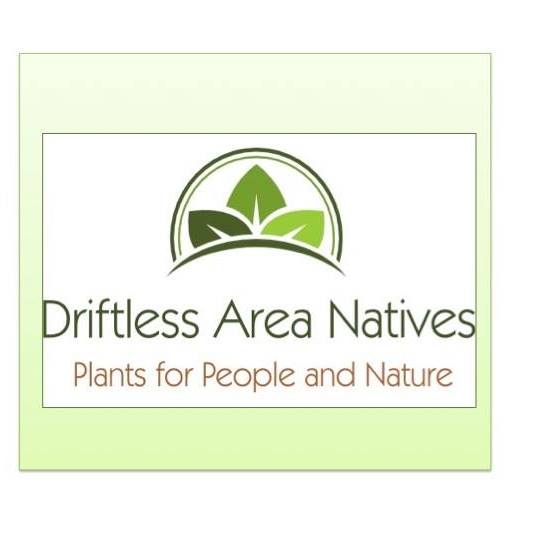
If you would like to apply for the grant or learn more about this program please visit their website http://feedabee.com/
To help create this environmentally sound garden we have partnered with Driftless Area Natives nursery in Trempealeau, WI to help choose and install the plants. It has been a pleasure to work with Joyce Cielecki on this project.
Did you know that recycled mattresses make great landscaping fabric? We would like to give a special thanks to 7 Rivers Recycling for donating mattress felt from discarded mattresses. We used these large pieces of felt as a weed barrier for our pathway through the pollination garden. The mattress felt was easy to work with, and using them kept the mattresses out of the landfill! Discarding old mattresses in landfills is not only a waste of resources but also problematic. They do not compact well in landfills and get caught in landfill equipment. You can learn more by visiting their website: www.7RiversRecycling.com

Why is this garden unique?
The location of this garden is also a vital part to conservancy efforts for native prairie plant restoration projects. This garden provides a “roadway” that connects the Mississippi Valley Conservancy property to the Thompson Memorial Prairie. The distances between these sites are too far for bees to travel without an intermediate foraging site. This garden location will provide bees a place to obtain nutrients as they travel to more hospitable foraging and nesting sites. Their pollination efforts will increase the native prairie vegetation that has been lost due to human activity.
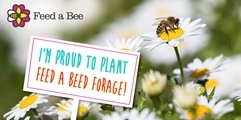
Saving the Rusty Patched Bumble Bee
Wisconsin is home to Rusty-Patched bumble bee which was added to the Endangered Species list in 2017. According to experts, the Rusty-Patched bumble bee has declined in numbers by 87% and has become the first U.S. Bumble bee officially listed as endangered. Other Wisconsin bees that are declining in population include the yellow-banded bumble bee, and the American bumble bee. It is critical that action be taken to provide nectar so that these particular species increase their population numbers.
Pollinator-Friendly Garden Practices
1) Create the proper conditions for success:
a) Proper Soil b) Correct Light
2) Select plants that provide both nectar and pollen for 3 seasons.
3) Consider annuals, perennials, shrubs AND trees.
4) Plant natives. (Include milkweed plants)
5) Use mulch for weed control and moisture retention.
6) Consider companion plantings and beneficial insects for pest control.
Stop the use of Neonicotinoids Pesticides. Find organic approaches to controlling pests.
7) DON’T USE CHEMICAL CONTROL of any kind in your lawn and garden!
8) Add a puddling area.
Books about Native Plant Gardens and Pollinators
- Bringing Nature Home by Doug Tallamy
- Attracting Native Pollinators by the Xerces Society
- Pollinators of Native Plants by Heather Holm
- Landscaping with Native Plants of Wisconsin by Lynn M. Steiner
- Butterflies of the North Woods – Minnesota Wisconsin and Michigan by Larry Webber
- 2016 Gardening for Butterflies: How you can attract and protect beautiful, beneficial insects. Black, S.H., B. Borders, C. Fallon, E. Lee-Mader, and M. Shepherd. Timber Press, Portland, OR.
- Newcomb’s Wildflower Guide (for identifying plants in the field) by Lawrence Newcomb
Online Resources
- U.S. Fish and Wildlife Service https://www.fs.fed.us/wildflowers/pollinators/gardening.shtml
- Feed A Bee Initiative http://feedabee.com/
- Million Pollinator Garden Challenge http://millionpollinatorgardens.org/about/
- Monarch Watch https://www.monarchwatch.org/
- Endangered Species –Rusty Patch Bumble Bee https://www.fws.gov/midwest/endangered/insects/rpbb/factsheetrpbb.html
- Protect Your Local Pollinators with a DYI Bee Watering Station https://offgridworld.com/protect-your-local-pollinators-with-a-diy-bee-watering-station/
- National Wildlife Federation https://nwf.org/Garden-For-Wildlife.aspx
